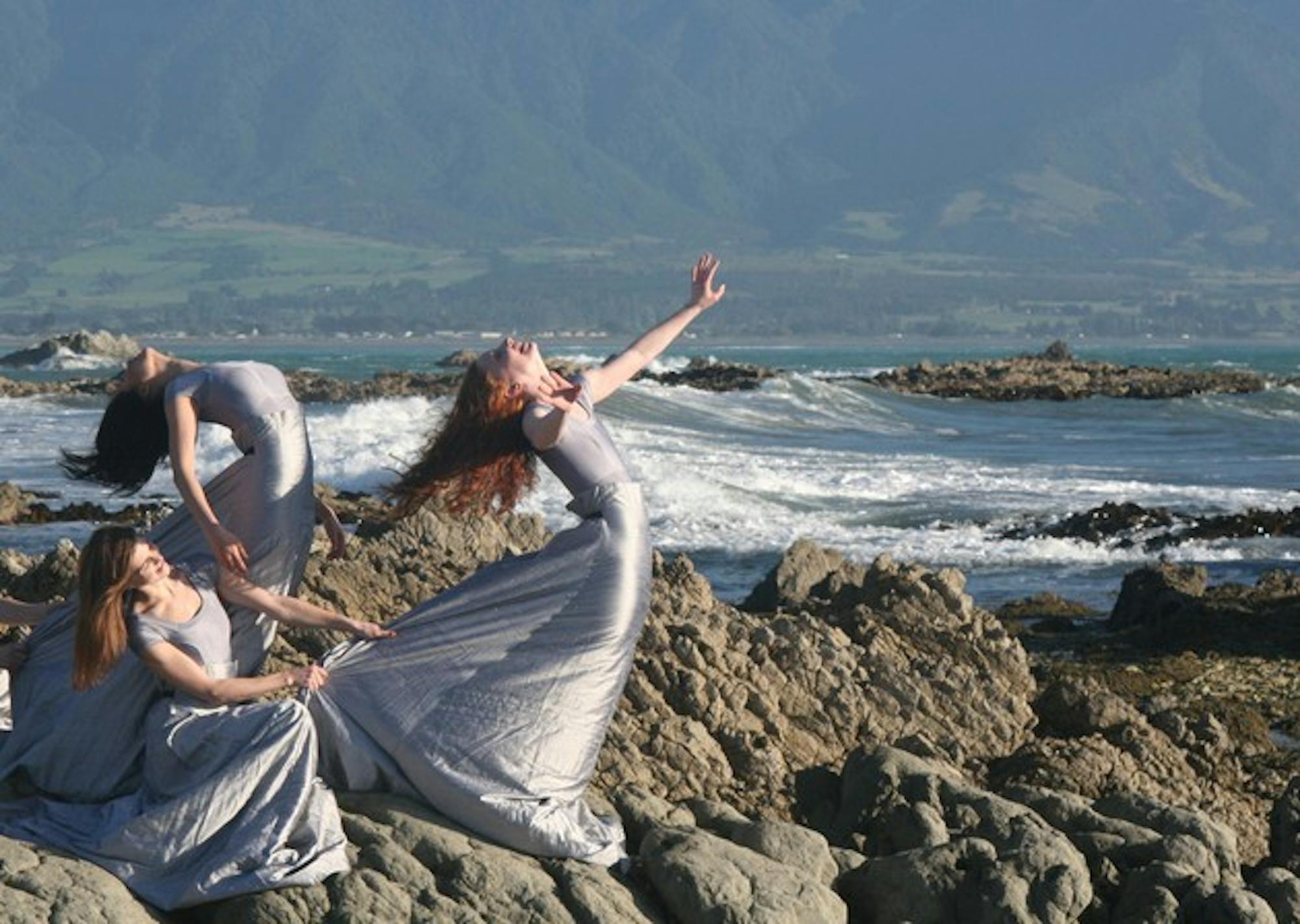The ensemble danced its annual spring showcase on Friday and Saturday nights. The performance, titled "Wonderland," was comprised of four dances that formed a very diverse program-- two well-known modern pieces framed by two new dances credited to the director of the ensemble, Ford Evans, and his 12 dancers. Interspersed with these pieces were two brief video segments that shared elements of the ensemble's spring break trip to New Zealand with the audience.
The two pieces not choreographed solely for this concert, Twyla Tharp's "Torelli" (1971) and Laura Dean's "Skylight" (1982), impressed the audience by showcasing the talented ensemble's flexibility, strength and grace. Watching these dances, I could appreciate the technique behind them and was awed by the intricate and seemingly effortless movements of the dancers. But as the troupe worked its way through complicated phrases, I wondered if I was meant to understand something from the dances or to merely to enjoy the geometry of the dance unfolding before me.
The first and last dances of the evening, however, illustrated far more than the technical abilities of the group. The opening piece, "Patu-Poi," choreographed by dancer and student assistant Fiona Lundie '09 with input from the other 11 members of the ensemble, incorporated elements of traditional Maori dance learned during the group's time in New Zealand. The dancers leapt across the stage in different team-like combinations while effortlessly manipulating two traditional Maori objects -- the patu, a type of Maori weapon, and the poi, a ball that is spun by an attached rope in a type of juggling. This piece made clear the enormous creative influence that the DDE's trip to New Zealand had on the group, in terms of the new techniques and the cohesive group dynamics that the trip inspired.
The final piece, the eponymous "Wonderland," featured four guests invited by Evans to dance along with the rest of the ensemble. Evans' imaginative choreography placed the dancers in a dream world where the dancers became doll-like and performed a series of vignettes that ranged from the playful (a seven-year-old girl frolicking in the dancers' long skirts) to the sexual (male dancers frisking underneath the very same skirts).
A common concern with modern dance, especially on a campus where hip-hop is somewhat of a hegemonic force to be reckoned with, is that the audience won't find modern movement accessible. But the Dartmouth Dance Ensemble is undaunted by the challenge of immersing the audience in the enigmatic world of modern dance.
"We create and inhabit a whole other world on stage," Lundie said. "[The audience] is presented with this world and becomes a part of it. But we're not forcing them in -- we invite them."
Perhaps because of the more direct role the ensemble played in "Patu-Poi" and "Wonderland," the worlds in these dances seemed more fully inhabited by the dancers. The video segments also helped lend a context to these dances by chronicling the ensemble's journey through New Zealand. With "Torelli" and "Skylight," however, perhaps because I couldn't imagine the process of the dances' creations, I felt less connected during the performance.
It may be no coincidence that "Patu-Poi" and "Wonderland" were also the two more heavily produced pieces of the four. "Wonderland" incorporated elaborate costumes like long, flowing silk skirts that the dancers used as props. Meanwhile the lighting evoked a night sky and added to the dream-like quality of the piece. These elements facilitated the imagination of alternate worlds and allowed the audience to lose themselves in the dance.
A huge effort went into each of the four dances: In addition to the hours spent rehearsing and performing -- not to mention their trip to New Zealand -- the ensemble practices for upwards of three hours each night. The enormous time commitment, though often trying for the student ensemble, resulted in an impressive spring concert.
"Moments like this -- performing -- make everything worth it," said dancer Lilai Guo '11.




